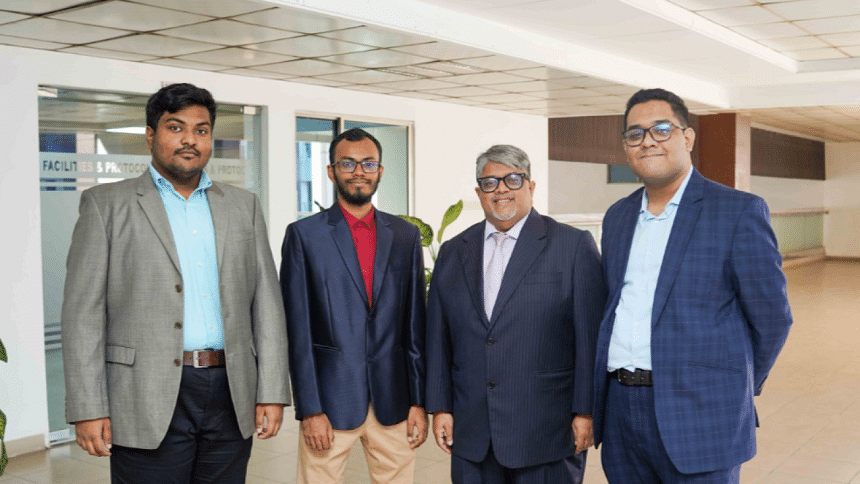IUB students pioneer AI-driven breakthrough in solar cell efficiency

Three undergraduate students from Independent University, Bangladesh (IUB) have created artificial intelligence and machine learning simulations that could enhance solar panel efficiency beyond the current standard of 15 percent.
The innovative research team, made up of third-year Electrical and Electronic Engineering (EEE) students Abyaz Karim, A F M Afnan Uzzaman Sheikh, and Sajid Ahmed Chowdhury, has found a promising solution to a persistent issue in solar technology. Their research addresses the fundamental limitation of silicon-based thin-film solar cells, which reflect around 30 percent of incoming light.
Under the guidance of Dr Mustafa Habib Chowdhury, Head of IUB's EEE Department and Director of the IUB Photonics Simulation Laboratory (IUBPSL), the team employed the advanced ANSYS-Lumerical software suite to illustrate how metal nanoparticles can transform solar energy absorption. Their findings indicate that specific configurations of silver, aluminum, and titanium nanoparticles, when adequately protected from oxidation, can capture more solar energy than conventional silicon-based cells.
The importance of their work has already received international acclaim, with two peer-reviewed papers published in IEEE-sponsored conferences in 2024. These papers are now indexed in both SCOPUS and the IEEE Xplore digital library, representing a significant milestone for undergraduate researchers.
The team's innovation centers on the unique properties of metal nanoparticles. Unlike silicon nanoparticles, metals possess free electrons that create stronger plasmonic resonance, enhancing light absorption and current generation. To overcome the challenge of oxidation, which typically forms an insulating layer that reduces efficiency, the team proposed a novel solution.
The research team is now developing an AI and machine learning algorithm to analyse larger datasets, aiming to identify optimal nanoparticle configurations for maximum efficiency. This work, originally planned as a final-year project, has already exceeded expectations.

 For all latest news, follow The Daily Star's Google News channel.
For all latest news, follow The Daily Star's Google News channel. 








Comments